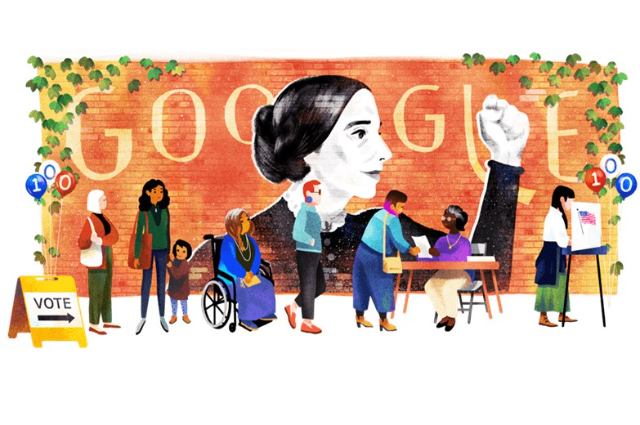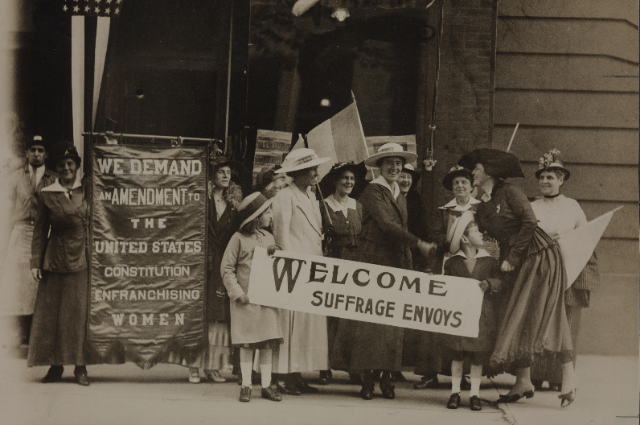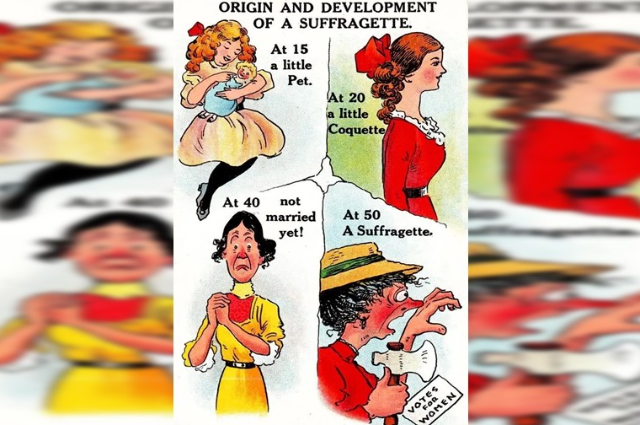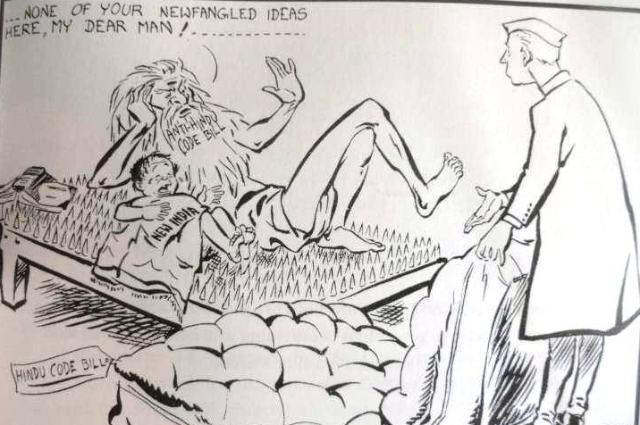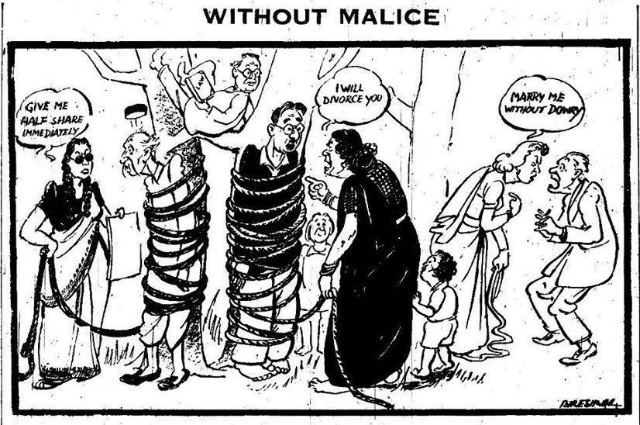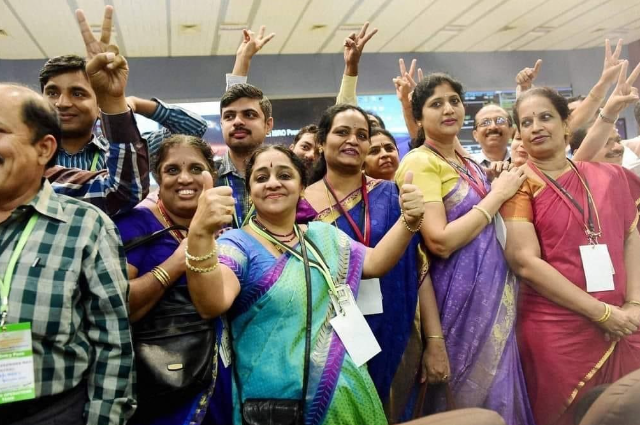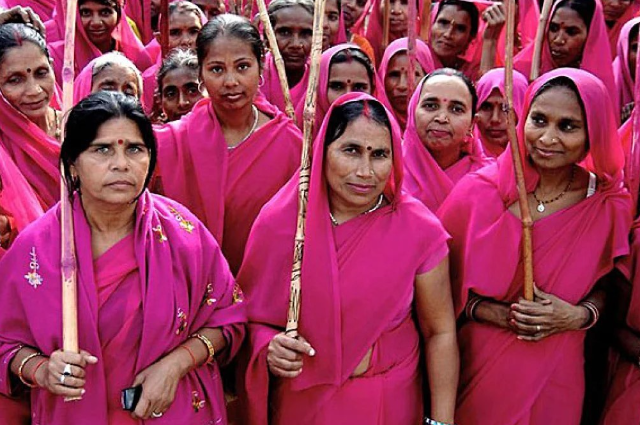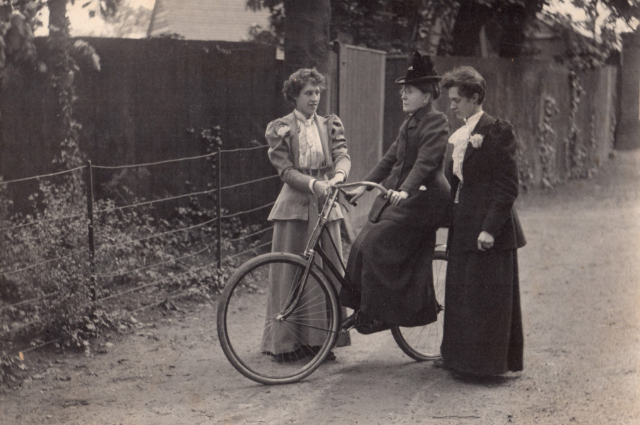U.S.A., 1872: On the day of voting, 5th November, hundreds of women throughout the country, from New Jersey to California showed up at their local polling booths announcing their right to vote by virtue of being American citizens. B. Susan Anthony- leading this movement in Rochester, New York presented the demand of women’s right to vote in the light of recently ratified 14th constitutional amendment (part of) which stated that “no state shall make or enforce any law which shall abridge the privileges or immunities of the citizens of the United states”. While the booth keepers submitted to her brilliant arguments and fiery personality, allowing her to cast her vote despite being women- she was apprehended very next day for federal crime of “illegal voting”.
In the most controversial aspect of the trial that followed in Federal Circuit court, Justice Ward Hunt denied her the trial by Jury and rather asked the jury to give verdict as guilty. Notably, even if he had allowed the jury to discuss the case, she still would have been denied a trial by a jury of her peers because women were not allowed to be jurors. And so, Anthony was asked to pay a fine of 100 dollars- which she refused to pay.
Following the trial and verdict, which was covered passionately by media, a number of people reverberated Susan’s argument and questioned why women were not considered “citizens” enough? The answer to this question came a couple of years later in ‘Minor v. Happersett’ case where SC declared that while women are no less citizens than men, but citizenship doesn’t confer a right to vote. Voting is a privilege deemed by the state on those it considers worthy and hence, the state is justified in its mandate to allow only males to vote.
The above episode is from the history of U.S.A., which is arguably the most powerful and advanced country today. American women eventually got the right to vote in 1920, owing to 19th amendment in constitution which addressed the gender-based discrimination categorically. (However, their citizenship was still vested in father or husband until 1934.) And further, it took around 40 more years for them to realise that Afro-American women are women too.
Interestingly, on August 18, 2020—the 100th anniversary of the ratification of the 19th
Amendment— then U.S. President Donald Trump announced that he would pardon Anthony,
148 years after her conviction. However- the president of the National Susan B. Anthony Museum and House wrote to "decline" the offer of pardon stating that accepting a pardon would wrongly "validate" the trial proceedings in the same manner that paying the $100 fine would have.
Similarly, the success-stories of women suffragists among other colonial powers like France, England etc came as late as the first half of the 20th century.
To put things into perspective: Women had to fight this long battle to get themselves considered “worthy” enough to vote in a world:
- Which was already pervaded by the ideas of equality, liberty and fraternity following the French Revolution in late 18th Century, essentially challenging the blind supremacy of a person by virtue of his position of privilege. (Yet, French women got right to vote as late as 1944)
- Where people had already woken up to understand that slavery is inhuman and a US president had gone on to the lengths of fighting a whole civil war to get it abolished
- Which was passionately romanticizing an new idea called “communism” that emphasised on utopian societal equality- while ironically overlooking the fact that the same idea also called for equal treatment of women, with its author having gone to the extremes of calling marriage as an exploitative institution and even domestic slavery.
The question is that why a world which, by large, was moving towards ideas related to cultivating compassion towards hitherto neglected and exploited, and embracing the ideas of fairness and equality, couldn’t see the unfair treatment of one gender at the hands of another- when there are mainly just two genders on Earth- thus making the imbalance of power all more conspicuous?
BIOLOGICAL AND SOCIAL REASONS FOR GENDER DISPARITY
The roots of gender inequality can perhaps be attributed to the biological reasons that resulted in assigning different kinds of roles to different genders (even in the animals, beasts and primitive human beings) with the male members of the group/pack/community assuming the dominant roles like those of protector of group, intimidating or attacking rival groups, etc.
Among mammals, males are generally larger, and more aggressive than females. This pattern is related to greater production of testosterone that is also associated with increased aggression.
(There are intriguing exceptions including hyenas, and chinchillas, where the females are larger and more socially dominant.)
As civilizations began to evolve, with jungle-rules and barbarism giving way to barter system and eventually to agrarian and industrial means of earning livelihood- which required heavy manual labour, this biological disparity ostensibly came to matter in the ways suiting male strength. Again, the male members took the lead in going out and earning for the family, while womenfolk dedicated themselves to taking care of household chores and nurturing children.
However, in most societies, this well-meaning arrangement would eventually create a huge imbalance- especially as mankind began to move towards a more industrially and politically sophisticated world. For example, more emphasis would be given on the education of men who were expected to be adept, aware, skilful and worldly-wise to function as able financial providers; while womenfolk (despite needing to be adept in household chores) were required to be well-versed only in matters related to home management and needed nothing to know more than that- thus severing them from the socio-political news of the world they’re part of. Eventually the male members would assume the roles of decision-makers first at home and later at social level (based on societal hierarchy) while women would be relegated to subservient roles. While a display of aggression in a young boy would be appreciated as a reflection of alpha-male traits, a similar display by women would be looked down upon, unbecoming of a lady born to play a second fiddle to a male- thus expected to be demure and submissive. Expected to be a glue holding a family together (that too based on her submissive traits rather than her intellect), the only currency of value associated with a woman was the “honour of her family”, something she was solely accountable for.
It was this institutionalisation that kept the world (which was by large being run by males) from realisation of their gender-based bias. Furthermore, it was this institutionalisation that made women associating and extending the same societal dictum to the coming generations which they themselves had been abiding by.
Again, it was this institutionalisation which got reflected in widespread mocking remarks and cartoons in Western media over the suffrage movements stating that “only ugly women undeserving of finding suitors talk about things like voting”- clearly indicating the highly condescending mindset towards women.
However, unlike the animals who tend to exhibit hardwired behavioural traits based on gender human beings have cognitive abilities distinguishing them from animals even in this aspect. In fact, as per experts, there is no gender-based difference in humans neurologically- i.e. no human brain can be termed as pure man-like or woman-like.
In keeping with their intellect that helped them shun jungle rule and establish civilizations eventually, both men and women began to challenge the orthodox gender rules and stigma leading to formation of associations intending to fight for women rights like equal wages, right to inherit property, right to vote, etc. Lately, women even played a pivotal part in many revolutionary and political movements of global significance. Also the world economics eventually started to shift from agrarian to industrial to service sector, cognitive abilities started to take over the perspiration and women began to prove their merit even in professional spheres.
THE INTERSECTION OF RACE AND GENDER:
Sally Kitch, a Regents’ Professor of Women and Gender Studies at Arizona State University, and writer of the book The Specter of Sex: Gendered Foundations of Racial Formation in the United States, after her intense research work to find answers to the curious questions regarding roots of gender inequality, came up with an interesting discovery the racial and gender-based judgments evolved together and influenced one another.
According to her, European explorers of the sixteenth century noticed differences like skin colour when they encountered natives of other continents, but they were even more interested in the unfamiliar sexual and reproductive practices of other cultures.
“The Europeans thought that cultures in which men and women weren’t that different in terms of their behavior or appearance were uncivilized,” Kitch says. Marriage customs, sexual practices, and even whether or not women experienced pain during childbirth (it was considered more civilized to feel pain) were all important distinctions used to disparage certain groups and, eventually, define races. According to Kitch, it was this notion (and not skin colour, per se) that served as the European judgment of African inferiority and justification of slavery.
As an example to Kitch’s assertion that behaviour related to sex and gender were the foundation of racial judgment: before race meant anything more than a person’s geographic location, European settlers in Virginia made distinctions between English and African women based on the work they did. The work done by African women was considered labor and was taxable by her employer, while work done by English women was considered domestic (and therefore more civilized) and could not be taxed.
IN INDIAN CONTEXT
Unlike her glorious past, Indian society in the 19th century bore witness to the prevalence of extreme orthodox practices and religious beliefs that led to the woes of women. While the ravages by barbaric invaders who viewed women as mere instrument of pleasure, had already led to subjugation of women and dictation of patriarchal rules aimed at preserving their honourthe evil practices like female infanticide, Sati Pratha, Nikal Halala etc added to the horrors of taking birth as a female. Widows were considered as harbingers of bad omen and hence, relegated to secluded quarters and life.
Much of this had to do with the East India Company being unwilling to do any major intervention in personal or religious matter of Indians and hence letting the civil laws being dictated by religious scriptures in case of Hindu and Muslim convicts
(Manusmriti/Yagyavalkya in case of Hindus and Shariyat in case of Muslims)- while using English law in case of minorities like Christians, Parsis etc.
However, Indian Hindu community was lucky to have social reformers and thinkers like Raja Ram Mohun Roy and Ishwar Chandra Vidyasagar who worked tirelessly for the cause of social upliftment. Roy shared a good understanding with Lord William Bentick- the first governor general of India, and convinced him to abolish Sati system and frame laws against female infanticide.
Similarly, Hindu Widow Remarriage act was passed in late 1850s by Lord Dalhousie. These efforts were followed by legislation on raising the marriageable age for women child in India and giving women right over property etc in 1920s and 30s.
Notably, all these changes infuriated the orthodox Hindus and were seen as an intervention in their religious matters, contested even by the likes of Bal Gangadhar Tilak. Muslim Community on the other hand was apprehensive of growing British intervention of Hindu religious matters and hence Muslim League leaders pressurised British Govt that nothing of such sort should happen in regard to their communal practices- something British government seemed to succumb to- thus paving way for Muslim personal laws i.e. Shariyat laws to be an instrument of adjudication on civil matters like those related to divorce, marriage, inheritance, etc.
During 1940s while the constitution of India was in making, Dr. B R Ambedkar made a strong case of constitutionally implementing the idea of Uniform Civil Code in India- i.e. framing of uniform civil laws applicable to all citizens independent of one’s caste/religion or gender just like Criminal penal code. However, wary of the outrage from Minorities PM Nehru brought Hindu Code Bill as a precursor to UCC, thus bringing Hindus, Jains, Buddhists, Sikhs, Arya Samajis, and Prarthana Samajis under the purview of uniform civil laws- while excluding the Muslims and other minorities from its purview for the time being.
Interestingly, when PM Nehru introduced the concept of “Divorce” under Hindu Code Bill, he was met by a strong uproar and criticism by fellow heavy-weight Hindu leaders. Our first President Dr. Rajendra Prasad questioned his audacity to even imagine the concept of separation when marriage is considered a “Sanskar” (sacrament) in Hinduism. Thus, many accusing Nehru-Ambedkar of attacking Hinduism and attacking west.
Also amusingly, the move to abolish polygamy under Hindu Code Bill was seen as discriminatory by Hindu men who questioned why their right to marry more than one woman was being snatched while fellow Muslim men could marry multiple women (owing to their Muslim Personal laws). Such was the irony that instead of Muslim women protesting the selective abolition of polygamy - it was Hindu men who were crying foul…!
However today, it is evident how modern Indian Hindu society owes its relatively progressive laws to Hindu Code Bill (and to the vision of Nehru and Ambedkar).
Points to be noted here:
- A progressive change is always inconvenient for any staunch religious follower.
- First a change needs to be implanted on a legal level before it gets reflected at societal practices (generally, not the other way round).
Despite legislation on many above-mentioned matters, society took its own sweet time to stop practicing them furtively. (For example- Sati was illegalized in 1829, yet last big issue Roop Kanwar case- came in 1987)
While, it is to the credit of Hindus to have made peace with these inconvenient changes in their practices at least eventually; while unfortunately Muslim community couldn’t find apt reformers and reforms- neither during British rule (with British apparently succumbing to pressure of Muslim League) nor under Nehru (who was apparently apprehensive of alienating minorities during the sensitive time of transition).
- Recently, Shayara Bano case (2017), thankfully led to purging society of Triple Talaq menace. However, unfortunately many sections of Muslim society are still plagued by social evils like Nikah Halala and Polygamy.
- Notably, Nikah halala is a practice in which if a Muslim man gives Talaq to his wife out of impulse and later the couple wants to remarry, the onus is on the divorced wife to “halala” (purify) the marriage.
- For this, she has to marry another man, consummate marriage with him, and then wait to get divorced by this new husband to return to former husband.
- As revealed by a sting operation by Indian Express, many religious scholars are milking the practice of Nikah Halala by charging hefty money for one night stands with divorced wives to enable them to save their marriage. - A historical peek into perhaps the most painful chapter related to Muslim laws is pertinent here.
- Shah Bano, a 60-year-old woman was thrown out of the house by her rich and influential lawyer husband Md. Ahmad Khan after his second marriage. On claim of maintenance money, Khan instantly divorced her by saying Talaq Talaq Talaq, thus making him responsible only for the alimony only for 3 months (period of “iddat”).
- On being challenged in courts, subordinate, HC and SC all upheld section 125 of CRPC (Code of criminal procedure) (instead of Muslim personal law) thus obligating Khan to pay lifelong monthly maintenance to Bano.
- There was a huge uproar by Muslim Community at the prospect of SC upholding Criminal law in the case, instead of Muslim Personal law.
- Succumbing to the pressure, Rajiv Gandhi govt, overturned the judgment cleverly by passing a new act, which stated the Muslim personal law will supersede CRPC in matters related to Muslim divorce and maintenance.
While dissolution of regressive laws and framing of a robust Uniform Civil Code is a far-fetched dream- recent success in the Shayara Bano case, followed by the legislative abolition of Triple Talaq is certainly a silver lining.
Unlike days of yore, where many unaware Muslim women were made to consider and celebrate the upturning of court judgment in Shah Bano case as victory of Islam; today slowly a wave of enlightenment is taking hold of modern day women of all religion, owing to the relentless working of many Muslim women organisations who dared to break the shackles of patriarchy not only for their sake but for fellow womenfolk across the globe, supported by noble and learned souls like Daniel Latifi- the lawyer who’d represented Shah Bano and dedicated his life judicial activism related to women’s cause- after the heartbreak at the hands of Rajiv Gandhi government.
MODERN CHALLENGES AND PROGRESS
When the Swachh Bharat Mission Gramin officials reached a small village called Udaypura in Jharkhand with an aim to end open defecation by providing toilet access to everyone- they were appalled by the unavailability of man-power to serve their cause of building toilets. Raj-Mistri (as masons are called traditionally), refused to work for the project considering it as non-lucrative. In such a situation, a 29-year-old woman named Sunita Devi came forward and expressed a desire to learn masonry and construct toilets. As predicted she became an object of ridicule, backlashes and heavy criticism in the village- castigated heavily even by her father-in-law for the same. She belonged to a family where women were not allowed to work- let alone work on such a novel cause.
However, overcoming all criticism, Sunita came up with an army of women called “Rani-Mistry”, going door to door to spread awareness and taking all willing women under her wing. Today more than 55,000 women work as Rani-Mistry in Jharkhand, having contributed to the construction of as many as 15 lakh toilets overall. Having emerged the face of Swachh Bharat Campaign in her state, Sunita’s undaunting spirit was awarded with the Nari Shakti Puruskar on International Womens’ Day in 2019 by president Ram Nath Kovind.
Examples like above-related to grass root level- capture the true spirit of women empowerment in India.
However, the need for empowerment may be different for different women pertaining to their social constructs. For some society, for example, letting a girl child escape female infanticide may be a big challenge while at other extreme end, a society may be having elaborate debates on using terminologies like “humankind” instead of “mankind” to avoid the subtle sexist connotation. Clearly the former kind of society is miles and miles away from debates on more mature and complex issues like those related to say, trans-women; while later clearly seems to have come way ahead of the basic concerns like ensuring right to live, provision of education and voting rights, etc.
As discussed earlier, previously almost all parts of the world had similar narrow vision and perception related to gender-based roles, inclined more towards misogyny. However- as a society progresses and advances economically and socially, its debates too graduate and level up.
In India, we have a mixed and rather diverse society. That’s why we have readily available examples from both worlds- we can see people fighting for basic rights of existence, educational and survival, and we can also see women taking to internet to voice their concerns and experiences regarding workplace discrimination and harassment for example in recent #me_too movement.
Similarly, on one hand we have examples like Sunita Devi breaking taboo by assuming a so-perceived male-oriented job, on the other hand we have examples like Pinjra-tod with female college students protesting for similar rights and privileges as male colleagues.
On one hand, we have shining examples of female professionals like the saree-clad female ISRO scientists who played a key role in the scintillating success of India’s lunar missions- on other hands we have had a dramatic group of vigilantes called Gulabi Gang striving for eradication of any form of violence and subjugation of women bringing the predators to justice in areas of Banda district and nearby regions of U.P.
Sadly, like in other parts of the world, we too have also witnessed extremely mixed outcomes of such campaigns- on one hand we have seen women getting benefitted by the sense of solidarity and real victims finally getting the courage to speak up. On other hand, we have seen women misusing such platforms and thus botching up the life of an innocent man as well as the credibility of real victims.
CONCLUSION
Despite being more than 120 years old, the iconic image of a 53 year old tiny-framed Frances Willard learning to ride a bicycle continues to be a symbolic reminder of women’s road to suffrage- with the cycle representing mobility and volition.
Willard also deserves credit for adding a new worthwhile dimension to the suffrage movement which can be extended to many ongoing practical movements related to women. While the previous radical suffragists like Susan B Anthony said that women should be allowed to vote based on the premise of equality- Willard demanded the same on the premise of being different. She said that women needed to vote because their problems, needs and concerns are so different from those of men, that the men can’t be trusted to choose the right representatives to get them addressed. A simple perspective that rebranded the whole movement and gave it a more practical outlook (though briefly, before it succumbed to religious colouring).
The soul of Williard’s argument is pertinent in the modern context as well. While a male and female employee at a workplace, working in the same official capacity may be considered “equal”, but they are not “same”.
For example, recently food delivery firm Zomato introduced a paid period leave policy. Company’s founder and chief executive officer, Deepinder Goyal, in fact, encouraged the creation of an atmosphere based on solidarity and understanding among coworkers: “There shouldn’t be any shame or stigma attached to applying for a period leave. You should feel free to tell people on internal groups, or emails that you are on your period leave for the day.”
However, Burkha Dutt the well-known journalist, was not amused by this move and criticised it saying that this would cause further “ghettoize women” who “fought hard not to be gendered”.
While every proposition may be debated from different points of view- in my view it seems better to understand, respect and acknowledge the uncontrollable differences of other gender in a bid to be comfortable in co-working. Initiatives such as period leave (and open discussion regarding them) may do great help to de-stigmatise the elephant in the room. Also, for women, such well-meaning initiatives may help bring tangible comfort without any shame or shyness thus, making the world a little less challenging for an aspiring girl child in future.

